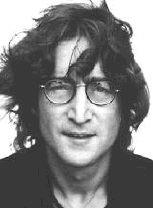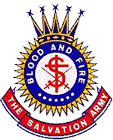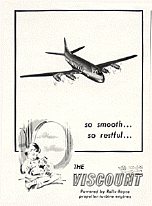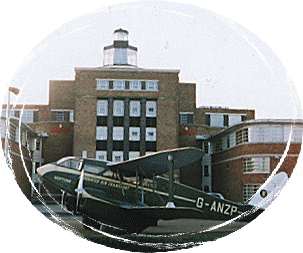 |
 |
 |
Strawberry
Fields
Mendips
The long, leafy
double-carriageway of Menlove Avenue divides Allerton Golf Course from John
Lennon's erstwhile home with the house standing well back from the busy
highway. Built in the 30's, 251 Menlove Avenue or Mendips as it was named,
would at that time have seen a few trams and the odd Morris Minor chugging past
and never have anticipated the race-track that they now have on their
doorstep.
Menlove was and still is one of the most picturesque Avenues in
the city with giant beech trees within the vast expanse of the central
reservation and cherry trees bringing welcome colour in the Spring. But as
well as being beautiful { if you can describe a highway as being beautiful }
Menlove Avenue is also deceptively deadly. it's very beauty has a calming
effect on pedestrians ----an effect which is lost on the drivers who speed past
--- and over the years the road has exactted its toll in human lives. Even during
the relative tranquil traffic conditions of 1941, the Rector of St. Peters
Church was killed by a car and in 1958, John Lennon's mother Julia, died on
virtually the same spot while running for a bus, ironically in the month of
July. John was 17 years of age when she died.
Julia had been visiting Mendips where her son lived with his aunt Mimi { Smith }
and her husband. For want of living space and financial reasons Julia had
asked her sister, Mimi, to take care of John for a short time when he was a child
and like so many arrangements of that nature the 'short time' stretched into
years. Julia had been in the habit of visiting John for all that time and
the trauma of her death and the manner of his unusual upbringing was there for
all to see throughout the whole of the remainder of John's life and must
certainly explain and excuse his sometimes abrasive manner.
Mimi was a mother to John and it was another year after Julia's death before he left to strike out
on his own. Never a great scholar, John was more interested in the guitar
and the vibrant rock music scratchily resounding from Radio Luxembourg and if
you had the money, vinyl 45's emblazoned with fabulous logos such as Sun, Capitol
and London. Like so many other parents, Mimi would caution him to
attend to his studies with words that would come back to haunt her many times;
" The guitar's all
very well, John but you'll never make a living out of it ! "
John never let her forget it and in later years he presented her with a
salver engraved with the words.

Mendips is a quintessentially English, semi-detached house with 3 bedrooms and a
garden back and front. Semi's have always been a bastion of the
suburban bourgeoisie and something that most families would aspire to but in
these days of out-of-control and spiralling house prices they are fast turning
into the financially unattainable for most people.
Despite this, to
anyone English, Mendips is just your average pre-war dwelling but it's something
completely different to the hordes of Lennon devotees who visit in their
coach-loads. The National Trust have taken over the ownership of the
house, decorated it in 50's style and stuck a Blue Plaque
on the wall and I suppose to someone from Tokyo or Kyoto it is just
as strange as a tea-house would be to me.
I've never really understood the fascination that the Japanese nation has for
the music of the Beatles and I can't think of one single Japanese song that I
could identify with in the whole of my life --- in fact I couldn't name
one Japanese song to save my life, unless you count Madame Butterfly. It's
also difficult to account for the love affair they have with John Lennon in
particular ---and the only thing I can think of is the Yoko connection. As
far as Yoko Ono herself, she has been reviled in many quarters but to her
great credit she has continued to return to John's home city and visits often
the places he made famous.
Strawberry Fields
The popular image of the
Salvation Army as a bunch of well-meaning eccentrics banging huge drums
and smiling benignly at passers-by is one the organization likes to present to
the public at large. The connection between a pseudo-militaristic
and
image of the
Salvation Army as a bunch of well-meaning eccentrics banging huge drums
and smiling benignly at passers-by is one the organization likes to present to
the public at large. The connection between a pseudo-militaristic
and
close-knit, hierarchical organization and Christianity is on the face of it
difficult to grasp and yet there's something solid and reassuring about a Sally
Army Band enthusiastically banging out their greatest hits on a cold
Winter's night and they have a way of lightening the spirits of even the hardest
of hearts.
But the comic-opera uniforms and clashing cymbals are only the tip of a
very big iceberg and beneath the façade lies a seriously efficient organization
which has been quietly and unassumingly performing good works since its
inception in Victorian London. The less fortunate members of our
society, the homeless, the lost-souls and the downhearted have good reason to be
thankful to William Booth and his wife when they looked around Victorian London
in 1865 and not liking what they saw founded the
Salvation Army with a rallying cry of Soup, Soap and Salvation!
The
practical and pragmatic help that Booth and his wife offered was a far cry from
the posturing of the hell-fire preaching of the day and if helping our fellow
man with humility and practicality is the true spirit of Christianity then the
Army and its adherents have much to be proud of.
General Evangeline Booth was the fourth daughter of William Booth and it was she
who opened Strawberry Field in 1936 after it was bought from the original owner,
miss Mary Fawley. The Victorian Mansion was converted into an orphanage
for girls from the slums of Liverpool and for decades afterwards there were many
saved from a lifetime of misery.
Tucked away behind closed doors { or gates in this case } in a serene and rural
setting it was an ideal sanctuary for the rehabilitation of traumatized
minds. For an adolescent John Lennon and his pals it was an ideal setting
to dream dreams, cement relationships { later to become The Quarrymen }
and germinate ideas for
songs.
Strawberry Fields Forever, the song, evokes perfectly those
delicious, escapist reveries when John took refuge in the grounds of a Salvation
Army home --- perhaps subconsciously he identified with the broken dolls that
dwelt there and perhaps he was looking for some comfort of his own.
This part of Woolton is one of the highest points in Liverpool and harks back to
a time when beacons were lit on the highest points throughout the land as means
of communication in times of war and so on and it is on Beaconsfield road that
the gates to Strawberry Field can be found.
Just a few years ago they were
stolen and couldn't be found at all until they turned up in a scrap yard
awaiting destruction. The gates and sandstone pillars have also become a
place of pilgrimage and all year round people from all over the world make their
way to the Salvation Army home.
In 2005, the Salvation Army made it their intention to sell the home and grounds
and to date they stand empty. But English Heritage who do so much to
preserve historic monuments are already working to ensure that the gates are
retained in situ and preserved for future generations.
There
is a small memorial to John Lennon in Central Park consisting of a circular
flagged area where there are always flowers and notes and visitors. It's
situated at the park entrance which John used frequently and is just across the
road from the Dakota building. It's a long way from the original Strawberry
Fields both in time and space.
Penny
lane
Strawberry
Fields Forever was a double-A side on its release in vinyl and if
John waxed lyrical about his teenage refuge then Paul fantasized about a
suburbia he knew so well. If ever an example was needed to illustrate the
differing personalities of John and Paul then that particular record is the
consummate example. The dream-like qualities of John's opus has undertones
of his saturnine nature while Penny Lane
reflects Paul's cheery and optimistic view of life. The wonder of
Penny
Lane, the song, is that anyone could create such a memorable song out
of such mundane subjects.
There's nothing special about Penny Lane ---it's a typically English outpost of
suburbia with bars and shops and library and charity shops ----and yet its very
ordinariness is what makes it so extraordinary and that's exactly what Paul is
telling us in the song. And it's true that on a sunny day there is a
certain je ne sais quoi about the place, an Englishness and a feeling
that despite all the ills you read about in the papers here in this place life
goes on as it always has and will continue to do so no matter what. And
that's also what he saw so clearly.
But Paul would never have known that the sparkling prettiness of the name Penny
Lane had little to do with an inspirational City Councillor indulging a whim and
saying " I think Penny Lane is just the job
for this pretty area" and a great deal to do
with celebrating the career and surname of one of the foremost slaver traders in
the city in days gone by.
The picture on the left taken in 1944, shows the cinema and corner which are
very little changed apart from the tram on the left and the policemen, neither
of which can be found today. The planes are P. 51 Mustang fighters built
in America and transported by sea and on to their destination at Speke airport.
The fire-station was still there, last time I looked but the eponymous
Barbershop has long gone. Mr Bioletti, the barber, was a rarity in the
50's ---- he produced haircuts which were little works of art and for those of
us who aspired to look like Elvis, Gene Vincent or Eddie Cochran then Mr
Bioletti made the dream come true. I always had a sneaking feeling to have
mine like Ian St. John and he got as near as anyone could with someone with hair
like a mouse.
He took time and he took care and in so doing became a cult
figure and a paragon among barbers of the time whose last employment was usually
H.M's prisons and
who regularly took less than 15 seconds flat to turn out a haircut one step
removed from the one your Mum gave you using a basin and knife and fork.
Most people walked around with haircuts like George Formby in those days but Mr
Bioletti led us into The Promised Land and became a God in the process.
Penny Lane is one of the few places that hasn't cashed in on the Beatle
phenomena and to its credit there is little to remind you that this is also a
place of pilgrimage for fans. The Penny Lane signs are a bit higher off
the ground than is usual as the City Council couldn't replace them fast enough
but apart from that there's no change whatsoever.
Speke Airport-
Days Gone By
The archive film of the
Beatles' triumphant return from their exploits in the Shea Stadium reappears at
regular intervals on T.V. and shows the band being welcomed home by thousands of
noisy fans. Most of them were girls standing on the terminal balcony with
their flags and banners draped over the sides ----- copied from the homecomings
received by Liverpool Football Club on their regular triumphs on European
football fields. Most of them were completely unaware of the
significance or history of the airfield they were looking at and at that time
would never have cared anyway.
Opened officially in 1933, the terminal was still being built five years later
but nevertheless the airport was busy with all
manner of public and private aircraft coming and going across the tarmac.
In those pre-war years, flying was a carefree business reserved for rich
hobbyists and the occasional company expanding their business, with the flying
machines themselves reflecting the general joie-de-vivre of their owners.
Speke airport was home to a glorious melange of Dragons, Darts, Hawks, Moths,
Falcons, Rapides and Cruisers --- there were biplanes, monoplanes, single-engined
and twin and all the paraphernalia of chocks and struts and ailerons that went
with them. It was The Golden Age of aircraft design and who knows what
exotic and fantastic shapes would have further evolved of it hadn't been for a
catastrophe which halted their progress just as surely as a previous cataclysm
had halted the dinosaurs.
By 1940, the eccentric collection had vanished and in their place came a
new breed of aircraft, altogether more aggressive and ugly. The class of
1940 was no fun at all and were spoiling for a fight, with American
imports alongside British made aircraft forming a formidable armada. Even
the names spelt trouble and the cheery insects and animals of yesteryear were
replaced by ferocious Thunderbolts, Wildcats, Hellcats, Lightnings,
Dakotas and Grumman fighters.
The British were a little more
reserved with Blenheims, Halifax and Lancasters but now and then the  odd Vampire
or Mosquito surreptitiously crept onto the tarmac. The war years for
Liverpool as a major port were extremely traumatic and the blitz changed the
face of the city forever leaving a bomb-scarred moonscape for decades
afterwards. But it wasn't only the shipping that the German bombers aimed
for and Speke airport and the surrounding factories also saw many a dog-fight
over the river.
odd Vampire
or Mosquito surreptitiously crept onto the tarmac. The war years for
Liverpool as a major port were extremely traumatic and the blitz changed the
face of the city forever leaving a bomb-scarred moonscape for decades
afterwards. But it wasn't only the shipping that the German bombers aimed
for and Speke airport and the surrounding factories also saw many a dog-fight
over the river.

The heavyweight bombers and the ever-evolving fighter planes became redundant
after the war and in their turn passed into history. It's surprising just
how few of these machines remain ----most of them are now rarities in the hands
of enthusiasts or museums with the remainder allowed to rust and return to the
base metals they sprang from. With the ending of the war, Speke airport
also had to change and became home to the latest in air-travel. It was the
proud boast of the new breed of aircraft that they were destined to supercede
the passenger liners but it would be a long time before the Atlantic liners
would have to worry.
Once again the names changed to reflect the character
of the machines and a whole new batch of Viscounts, Comets and Brittanias were
meant to represent class, efficiency and reliability. It was a time when
Airline Pilots were akin to gods and to be an Airline Stewardess was somewhere
between a vestal virgin and a Hollywood star. Unattainable and aloof,
pilots and stewardesses with their immaculate uniforms and impenetrable
sang-froid were the new aristocracy ---- since relegated to budget class with
the coming of the football superstars.
Unfortunately for most of us, in the
50's and 60's and even the 70's, air-travel was a luxury beyond the pocket of
anyone but the very-rich, the quite well-off or at the very least the Man from
the Prudential. It was the province of princes. But the cat can look
at the queen and in the halcyon pre-terrorist days it
was common to visit Speke
airport and climb up to the balcony which was open to the public.
The true
aficionados would spend the whole day up there with a flask and some sandwiches
taking plane-spotting to the same level as train-spotting or bird-watching while
others would pop along to watch the planes taking off and landing.
Occasionally, it would get round that someone famous was about to land and a
crowd would gather but even the likes of Frank Sinatra could walk through
customs without much trouble in those days.
So, of the crowd that welcomed
the Beatles on the eponymous balcony very few would have ever been up in a plane
and it would be another decade or so before they could even think of travelling
to Torremolinos and turning it from a picturesque fishing village into a forest
of the featureless.
Progress overtook Speke airport by degrees and wha t had once been a busy
airfield turned into an anachronism, with flights to Ireland or The Isle of Man
just about all there was available. The realization dawned that Liverpool
needed to move with the times and the new Liverpool International airport began
to take shape just a mile or so up the road, parallel to the river---- and
Speke began a decline rapidly. In a way, the new airport was the saviour
of the old, with the Marriot group having the acumen to realize that airports
need hotels and they took possession of the old Speke airport.
t had once been a busy
airfield turned into an anachronism, with flights to Ireland or The Isle of Man
just about all there was available. The realization dawned that Liverpool
needed to move with the times and the new Liverpool International airport began
to take shape just a mile or so up the road, parallel to the river---- and
Speke began a decline rapidly. In a way, the new airport was the saviour
of the old, with the Marriot group having the acumen to realize that airports
need hotels and they took possession of the old Speke airport.
The
restoration of the old buildings was carried out with loving care and all unique
charm of the place was retained within the renovation work, right down to the
drainpipes with their embossed airplanes. Today, there is now a modern
hotel within a beautiful art-nouveau building which is unique in retaining all
the atmosphere and anticipation of a flight in one of those archaic 1930's
planes.
The balcony is still there and
hotel residents have the unique view of planes right outside their windows.
The Birdman
Great Britain wasn't so
great after the war and ration books were still in use up until 1953. Bananas,
oranges, dates and so on were all scarce and foods
such as peppers and even corn were unheard of. Food and fruits we now take
for granted were either exotic dreams or unattainable luxuries and very few could afford
to go to a restaurant but it was hardly worth the expense as they differed very
little from home cooking anyway. Supermarkets were non-existent, shopping
was a dreary round of the butchers, the bakers and the candlestick-makers and
the staple diet was stodgy and unimaginative. A 50's shopper miraculously
transported into a year 2000 Tesco would think she had died and gone to
housewife heaven.
Incredible to believe, but a mere 50 or so years ago there were people who
lived in homes minus hot water, minus a bathroom, and an outside toilet which
regularly froze up each winter. It was normal to get washed in the same
sink in which the dishes were washed { if you wanted a bath then you went to the
Public Baths where you could pay for a bath which was filled by an attendant }
and for all hot water to come from a kettle heated on a stove which consisted of
a central open fire and ovens each side, the whole thing being" blackleaded"
as a matter of pride. In my grandfathers house, each evening the cat
would steal into the oven as the fire died down and stay there for the night,
until one freezing cold night the fires were banked up before going to bed and
the poor thing was found done to a crisp the next morning. The ubiquitous
"two-up and two-down" was a slight step-up from the Victorian
"courts" and row after row of them were built circa 1885 with gas-lighting but
despite the distinct lack of facilities we never thought of them as being slums
until many years later someone was kind enough to tell me.
Many people lived in this way and could not aspire to anything more. Most
of the male population had served in the war in one of the services and it was
normal for them to seek each other out in the pubs where ale was cheap and the
choice was mild or bitter { apart from special brews which were expensive no
other beers such as lager were available }. A visit to the cinema was the
highlight of the week with t he kids Saturday matinee an added extra.
Television was a luxury even in the 60's, so anyone who owned a flickering,
black-and-white T.V. set within a massive wooden box was everybody's friend and
would find themselves surrounded by a whole
host of new best friends most
evenings.
he kids Saturday matinee an added extra.
Television was a luxury even in the 60's, so anyone who owned a flickering,
black-and-white T.V. set within a massive wooden box was everybody's friend and
would find themselves surrounded by a whole
host of new best friends most
evenings.
It was to this background, that on a hot, sunny May 21st in 1956 a huge throng
of 120,000 people made their way to Speke airport. The annual air-display
was a feature before the war and Liverpool Corporation had decided to re-start
the popular pre-war show but never expected such massive crowds. The
number of spectators had been swelled by the advertisements in the Liverpool
Echo which for weeks had been publishing the exploits of
"The Birdman"
and the legend grew with each telling and so did the crowd.
The "Birdman" was a Frenchman, Leo Valentin, one of a very small breed
of parachutists who had turned to attempting flight using
"wings". The cult had started in the 30's and by the time the
last man tried it in 1960, there had been a total of 75 "birdmen"using
wings ---- 72 of them crashed to their deaths. As foolhardy it it seemed,
the "birdmen" were in fact the first proponents of free-fall
parachuting and sky-diving and their mistakes paved the way for a future
generation who would be more successful, so their deaths were not altogether
wasted. To this day, controlling position during free-fall i s known
among practitioners as the Valentin Position.
s known
among practitioners as the Valentin Position.
Leo Valentin was born in
Epinal in 1919 and from the age of 19 had joined the French Armée de l'Air,
with the express ambition to learn parachuting.
When the greater
"chute" came about and the Nazis invaded France, Valentin escaped to
Morocco, then a French Protectorate, and became a sergeant-instructor in the
town of Fez. Wanting to take part in the war, Valentin made his way to
Glasgow via Liverpool, where he received intensive training in the art of
parachuting. in 1944, he parachuted into Brittany and took part in some
fierce fire-fights resulting in him shattering an arm. After the war,
Valentin became fascinated by delayed-drop parachuting and studied the memoirs
of the very few who had gone before him. The result was his first
free-fall drop over Pau in 1948, falling to 1800 ft. before opening his
chute. From there, it was just a short step to using some form of wings
and in 1950 he built a pair of canvas wings and jumped from a plane over
Villacoublay in front of a crowd of over 300,000 Frenchmen ------and nearly lost
his life in doing so. After one other attempt with a similar result,
Valentin decided to change to wooden wings and designed his own balsa wings
which were hinged on each side allowing freedom of movement.
Unfortunately, there was too much freedom and one of the wings caught a gust of
wind and closed in and once again Valentin came close to losing his life.
A locking device on the wings proved little better but Valentin was persistent
to the point of obsession and on one fine day in 1954 he finally got it
right and flew for a distance of 3 miles over Thorign y.
y.
He became adept at
performing his aerial feat and the day finally dawned when he arrived at Speke
with his 9 foot wide, orange-coloured wings consisting of 28 lbs of balsa wood
within an alloy frame.
Valentin was no eccentric, neither was he ignorant of the risks he was taking
and in order to lessen the danger he always flew with a parachute as
back-up. He had written of his fears and the courage he had to muster up
to carry out his flights and this was to be his last ---he was retiring after
Speke. He was also superstitious and insisted on his hotel number being
123.
And so, Leo Valentin boarded the Dakota for what was to be his last flight.
All went well as the plane reached the required height of 9,000 ft and Valentin
was heard to shout his mantra 1-2-3 as he leapt out. One of the wings
caught the door and splintered as he exited backward and he immediately went
into a spin. The crew aboard the aircraft saw the difficulties he was in
and along with the sea of upturned faces, awaited the parachute to open which it
did accordingly and immediately wrapped itself around the broken wings. Valentin was no more than a dot in the sky to most people as he fell to earth
and crashed in a field in Halewood.
A sad end to a supremely brave man who died like many another "bird"
with a broken wing.
John Lennon Airport
In March 2002, the new Liverpool Airport was opened by Cherie Blair and Yoko Ono
who performed a double-act for the pressmen. The focal point of the
event
was the unveiling of the 7ft bronze statue of John Lennon at the top of the
stairway to the lounge which is passed by every passenger who uses the
airport.
The sculpture is the work of Tom Murphy and has John striding
purposefully to some destination known only to himself ---a brilliant study
which is typical of Lennon during his most creative period .
Tom Murphy
has sculptures all over the city and just like his John Lennon they capture
their subjects in typically life-like poses. A 60's and 70's collection of
letters and drawings by John Lennon were on show before being returned to New
York.
The airport logo is of course "Above us only sky"
from Imagine. And as much as John Lennon airport is a success story for once
the past has been retained in an imaginative and innovative manner.
